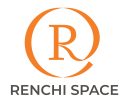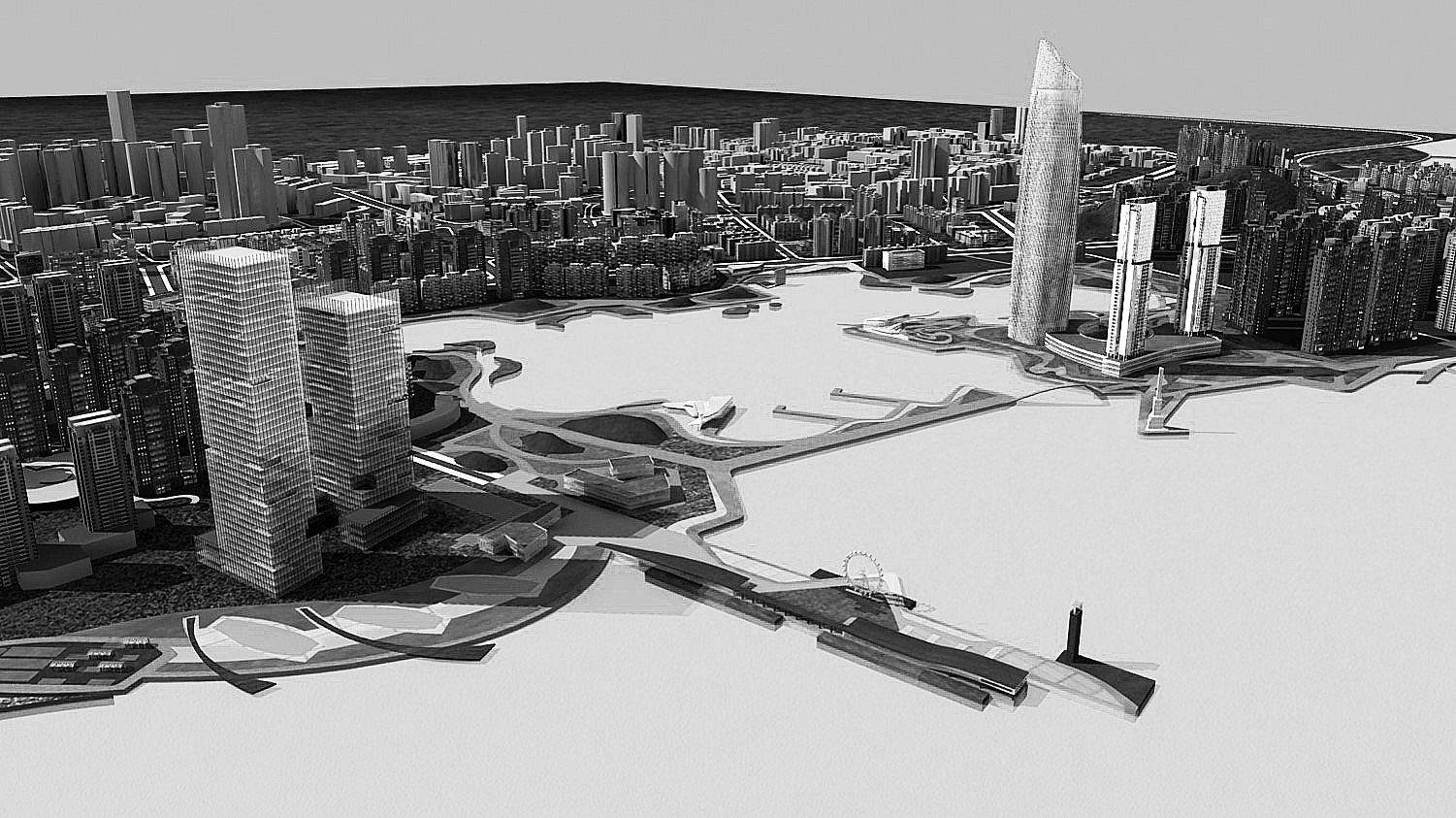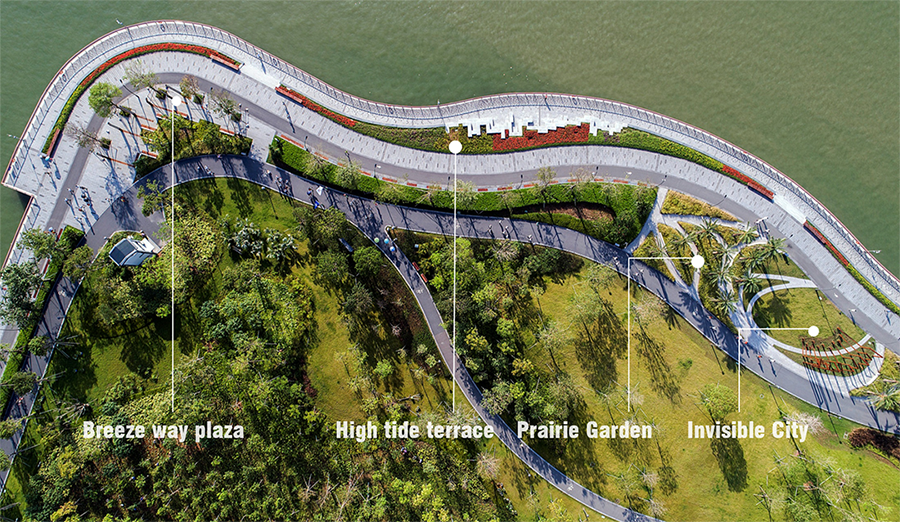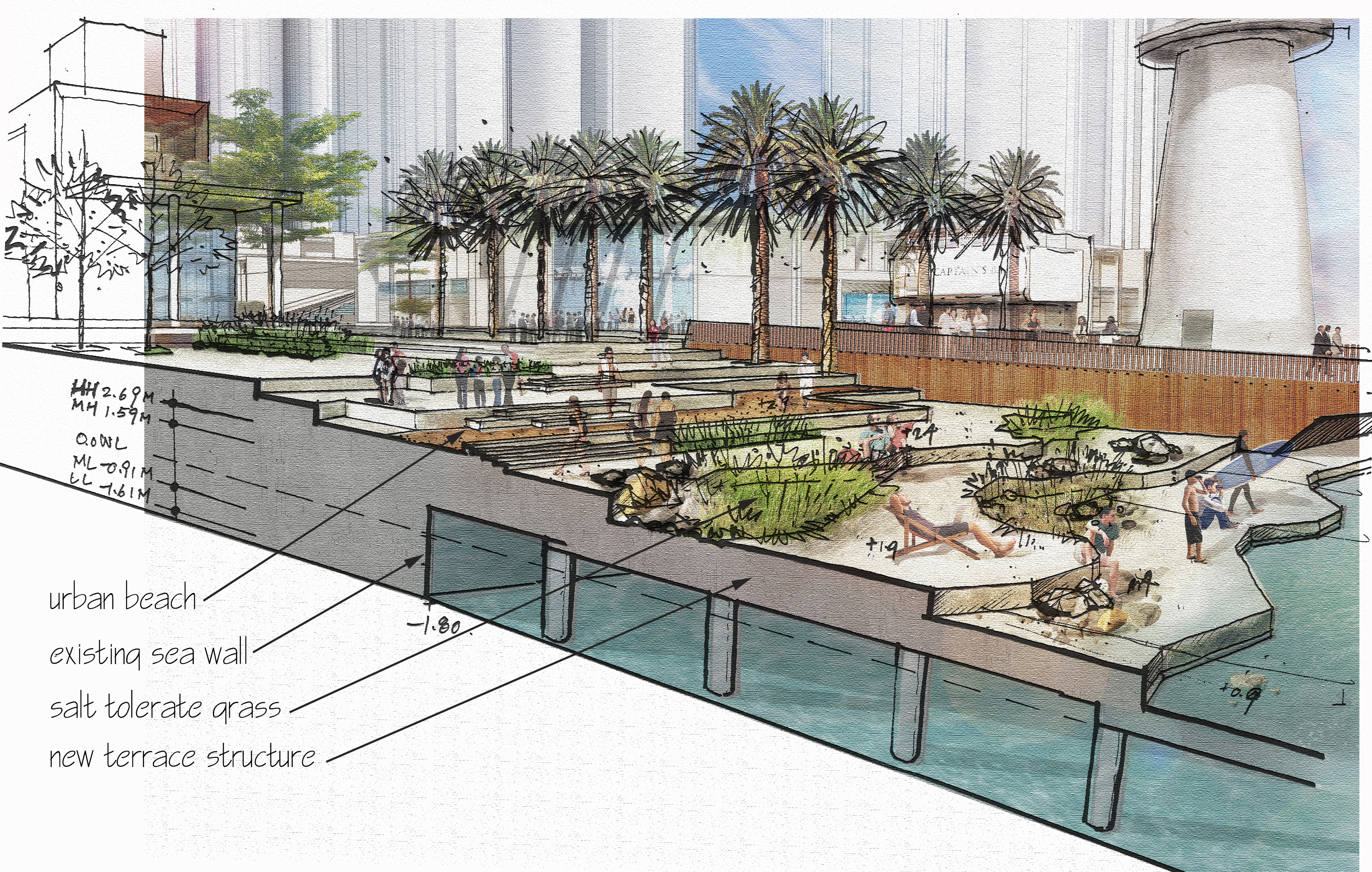By Peiwen Yu
In an age of technology that so often produces simulated reality at the expense of the real, how do we design American and global cities to be smarter and more enjoyable to live in? As a landscape architect and city builder, I am convinced the urban places we inhabit shape us, acknowledging our human quest for authenticity, an experience of belonging in where we live.
(Shenzhen Bay Waterfront, photo by Jia Fang, Sikang Photography)
Today’s technology and artificial intelligence has amplified the power of humans significantly. However, human feelings could never be fully delivered through a map on your device, or by virtual reality, as no technology has by far successfully “hacked” humans by decoding our complex emotions. How we interact with the real city environment we live in has powerful impact to our emotion and health. Places made with authentic contextual heritage can reinforce the connection between people and places, through experiential reactions while walking through the space.
By sharing the story of this newly constructed and successful waterfront – Shenzhen Bay Shekou Promenade, I hope the ideas that shaped the built work may inspire more city building reflection and actions.
(Shenzhen Bay Park System from air, photo by Jerry Liang, CAUPD)
Shenzhen, one of China’s fastest urbanizing mega cities, would be unlivable without its parks, squares, waterfront promenades and green mountains. As the first Special Economic Zone China Established in 1980, the city placed itself on the frontier of domestic reform and urban architecture renewal, earning the reputation of China’s Design Capital. City building progressed so rapidly that the population has grown from 30,000 (1979), to 8.4 million 30 years later, from a fishing village to a fully industrialized metropolitan area. However, the Shenzhen speed of urbanization made the city a victim of its own success – the lack of cultural and livable urban public space has been a pressing issue for this immigration city.
Many global immigrant cities face similar issues: lost identity and disconnection with its original landscape. Among many public space transformation projects that have evolved with the needs of the city, Shenzhen Bay Parks System is a major effort to reconnect the city back to its waterfront. The international competition master plan SWA Group proposed in 2005 for this 15 KM long coastline involves reinventing disturbed shoreline by landfilling, over-fishing and toxic waste from Shenzhen River, returning the city to its roots on the Bay.
(Shenzhen Bay Park, by Jonnu Singleton)
While the first 9 KM long Shenzhen Bay Coastal Park built in 2011 focused on building ecological resilience of the Bay’s environment, Shekou promenade, the last 6 KM of Shenzhen Bay’s urban waterfront completed in 2017 took a cultural and context-sensitive approach. Design employed a place-making strategy that celebrates site’s unique contextual heritage – the mountains by coast line, its industrial past, and the hinterland culture. At the core of the creative process is “renewal” – taking what’s existing and blend it into the new space making, offering an intertwined experience with distinct cultural identity.
(Image below: overall diagram of Shekou Promenade).
Based on the narrative of 2014 international competition-winning scheme “Culture Lines from Hinterland” project was built within a narrow linear waterfront site, formerly occupied by various port and fish harbor functions, including an engineered barge dock, loose sandy beach, a disused oil pipe pier, old residential boardwalk, and Shekou’s historical fishing boat harbor.
First question came to my mind before any design starts, is that how to make the promenade landscape authentic to its unique context, with a strong sense of place. The historical natural landscape of Shekou is known for its beautiful mountains, which is now in the hinterland after years of landfilling and shoreline evolution.
Today the natural mountain’s profile is still visible from the waterfront, but the nice living experience of strolling at a walk between the bottom of hill and water edge has been lost entirely. By re-imaging the “mountains” in new promenade landscape, the design brings undulating landform features back to the waterfront, to deliver an interpreted experience of Shekou’s memory.
Above 3D model study from competition scheme shows the undulating landform concept integrated into promenade landscape, 2014
Photo above shows the constructed undulating landform at the promenade, 2017
Site’s industrial past, hinterland culture were written into a narrative, interpreting the original places, certain lifestyle and materiality vibe with new landscape space. Instead of completely preserving an old fish boat, a crane or a bollard, design tried to curate new spaces with a feeling of Shekou waterfront’s authentic impression.
As a new addition to the global city of Shenzhen’s waterfront open space system, Shekou Promenade transformed an out-of-date industrial shoreline into a vibrant public space. The once disconnected, dull and even dangerous shoreline walk has been revitalized with various newly implemented leisure programs and culturally enriched landscape elements.
Starting from a landmark pedestrian bridge that connects the old and new Shenzhen Bay waterfront, Shekou promenade begins with Nature Park segment, which provides a continuous recreational route for people while separating pedestrian, jogging and bicycle lanes.
Along the way, the design seeks place-making opportunity to introduce a distinct character that reminds people about the context of this waterfront. Interpretation of nature’s rich, complex and subtle beauty lays a foundation for the strolling experience through creative paving patterns, topographic forms, and planting textures.
On top of the ground plane creation, landscape and site furniture are introduced to allow people to stop and relax along the walk to enjoy great ocean views. Granite seating blocks and wood bench ideas are from wooden fishing boats and Shenzhen’s well know quarry landscape, embedding a contextual material vibe of this place into details.
Then many simple but effective art installations are choreographed along the Promenade. They each serves as a thematic place-making element that delivers impressions of the waterfront: the tide, the wind, the coastal grasses and industrial city skylines. Together they function as uplifting moments that enhance the users’ imagination and experience within the public space.
(Contextual photos by David Lloyd at Shekou waterfront, before construction)
Photos below are taken after construction at the moments of Breeze Plaza Corten Steel Light Installation, Invisible City Steel Installation, High Tide Stone Block Terrace, and the Prairie Garden.
“Window to the Sea ” is a segment of the promenade that is situated in where the city road and promenade meet and open up the views from the street to the ocean. A shade structure created with the fishnet concept was proposed to help frame the picture window. Using thematic design cues from fishing boats and fishnet, seats and shade canopy reinforce the visual connection and memory of the region’s fishing history.
The shade canopy inspired by “fishnet” serves as a picturesque overlook at the “window to sea” location.
“The Peninsula Walk and Ocean View Plaza” is a segment of the promenade that is adjacent to the under-construction Peninsula Mixed Use – a luxury retail and super high-rise residential development. By re-imaging Shekou’s “mountains” and creating a high ground overlook, the design introduced multiple ocean view points at both promenade level and man-made hilltop.
High ground overlook space on man-made hilltop, with a view towards Shenzhen Bay Bridge.
Site furniture is also designed with a narrative of “mini” mountain.
Peninsula Walk promenade can be easily accessed from adjacent super high-rise tower neighborhood: The Peninsula Phase III. According to the manager of Peninsula Developer, who’s been doing several phases of housing projects at this waterfront, their property value has been increased 10 times since the construction of Shenzhen Bay Coastal Park in 2007. The transformation of postindustrial shoreline has clearly contributed to the city’s economic and social growth.
Plaza connecting promenade and Peninsula development provides an open space for exercise, social gathering and events. Corten lights, wood bench and “quarry memory” paving enhance the experience of postindustrial shoreline memory.
Part of the new promenade involves upgrading of the existing space. Shekou Memorial Terrace Proposal tackled an urban space upgrading solution for a waterfront tourism spot – the Shekou historical lighthouse. The design intent was to create an intertwined experience of old and new, reinventing some of the existing features that are informed by the memory of the place. The terrace design upgrades the landscape around the lighthouse and expands a planted terrace with an urban beach and tidal pool into the bay, creating an interesting encounter between urban life and nature.
Original design sketch:
(above photo by Jian Fang, Sikang Photography)
Last segment of Shekou Promenade is Fish Harbor Park. As one of the cultural landmarks of Shenzhen Bay, Shekou’s fishing harbor, with over 100 years of history, has witnessed the dramatic city transformation of Shenzhen. This natural deep-water port hosts hundreds of fishing boats and functions as seafood storage and wholesale center. The promenade design was careful to keep much of the fishing boat parking, repair, and seafood wholesale capacity as part of the promenade experience. That priority was achieved through careful planning of both recreational and fishing production circulation routes to allow multi-use of the shoreline without conflict.
Fish Harbor Park is a place for sports, social interaction, and events. An asphalt-paved skate plaza surrounded by a series of stacked-wood seat steps shapes the heart of this park, while smaller playgrounds, ball courts, fitness plazas, a bike rental station, and shade shelters are positioned with convenient access throughout the park. Playful paving, furnishings, and architectural shade canopies are inspired by the fishing boats and the colorful barrels the fishermen use in their trade.
Shekou Promenade has become the most celebrated waterfront in the city for 12 million people since opened in July 2017. The number of visitors to Shekou Promenade has averaged 20,000 people per day since its opening and exceeds 30,000 during special events. The popularity of this open space is attributed to several things: besides being an accessible, well-constructed new park that allows people to engage in various activities, this contemporary landscape evokes its former site through references to the cultural heritage of this postindustrial waterfront. People love to spend time here as it offers a uniquely reinterpreted experience of the “authentic” Shekou. There has been a surging photography contest on social media to celebrate this new destination of the city. Photos below are taken by the public and posted on social media sites, showing many people enjoy various unique places along the promenade.
Authenticity is a buzzword of the 21st century. Landscape architects must fully understand a philosophical approach and employ related skills to make the value of heritage visible and able to be experienced in physical environments. As TCLF Director Charles Birnbaum has recently pointed out, the next frontier in creating fully resilient sites is to develop proficiency in integrating “authentic” cultural values that take into account functional, aesthetic, and ecological perspectives.
Image sources:
Shekou promenade Photographs by David Lloyd and Peiwen Yu, unless noted otherwise
Shekou promenade Design sketches by Peiwen Yu
Shekou promenade Design graphics by Peiwen Yu, Tarana Hafiz, Xin Sui, Kunkook Bae, Kuang Xin.



















































Pingback: http://vioglichfu.7m.pl/index.php?n=25
Great Share! Would you be interested in exchanging links?